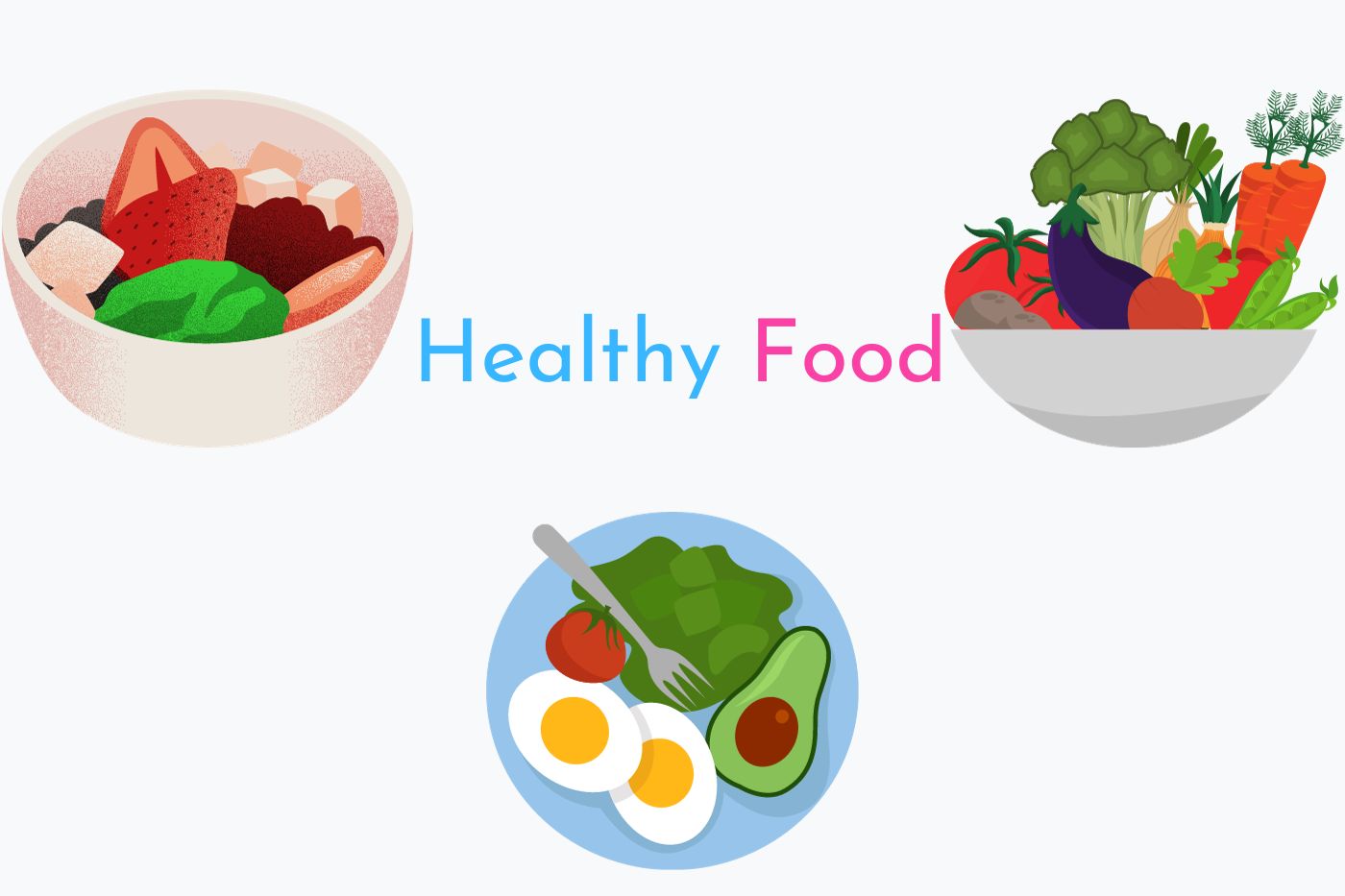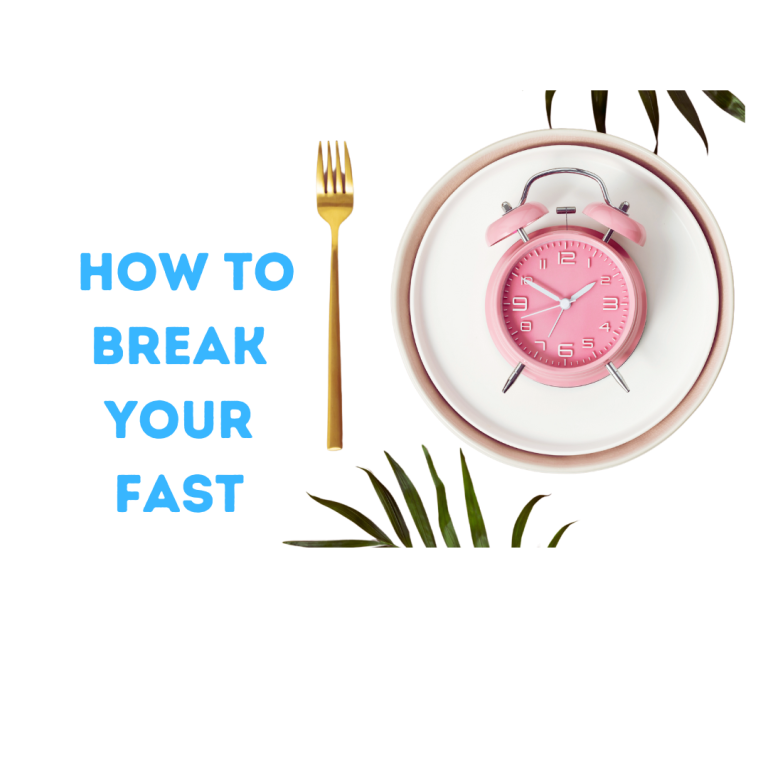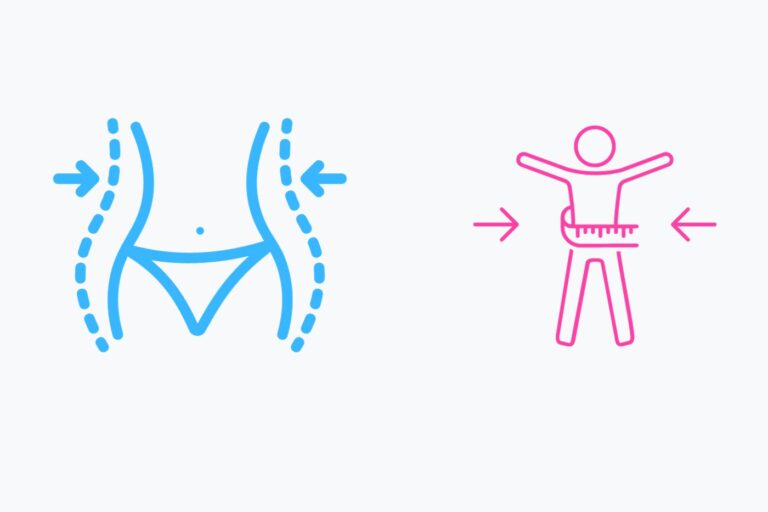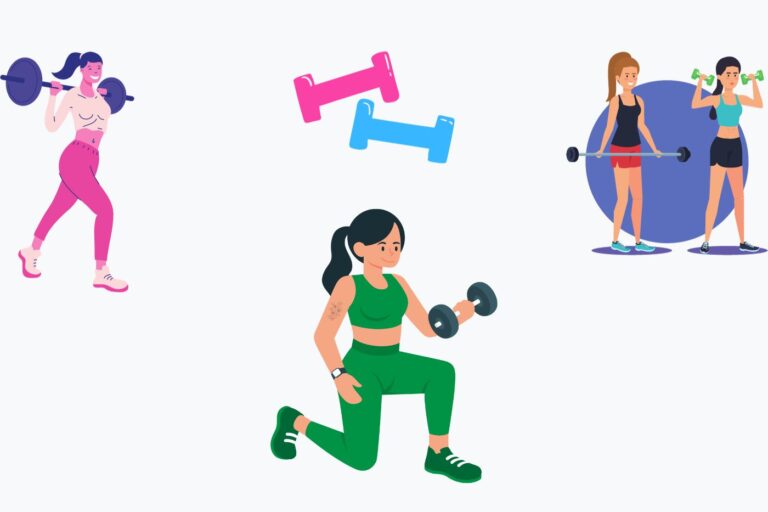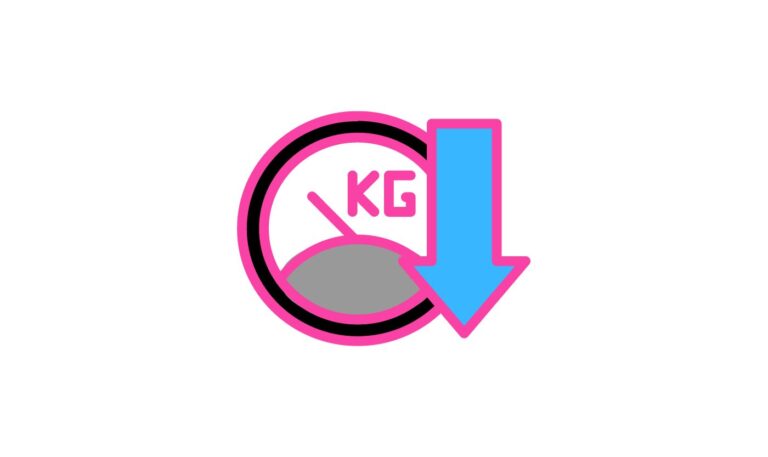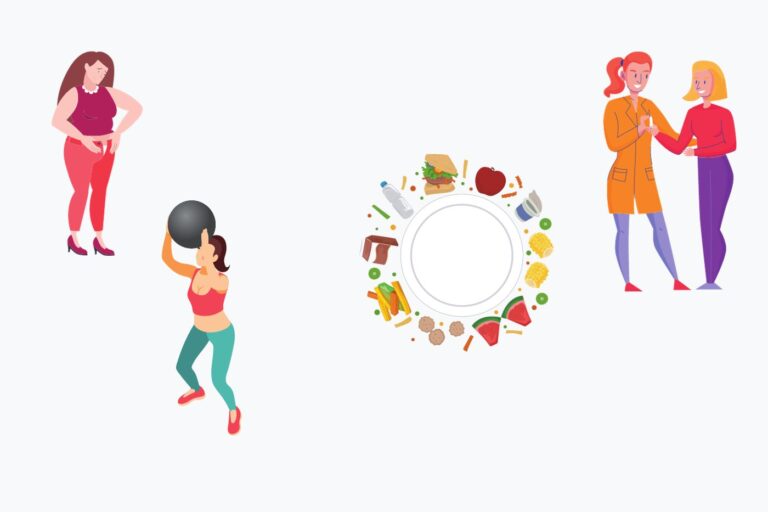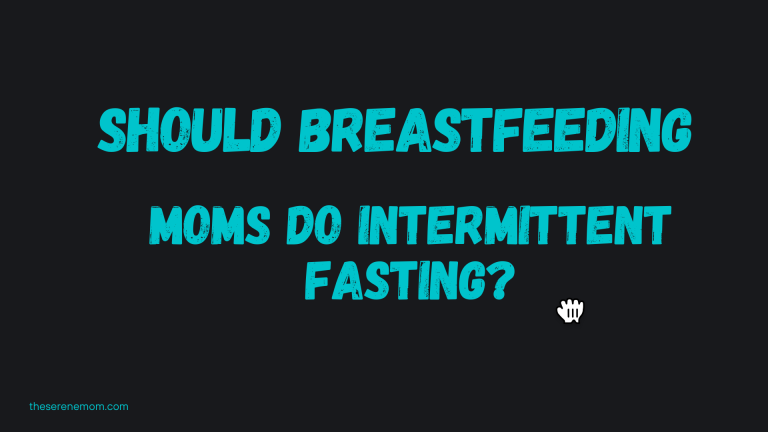Best Foods for Intermittent Fasting to Boost Fat Burning
The weight loss industry was worth more than $175.44 billion in 2022, and it can only be higher. With such crazy figures, fad diets will thrive and you may know what works and what doesn’t and this is where intermittent fasting itself finds itself.
But before you brush it off, listen in. Intermittent fasting (IF) is the oldest form of diet that our ancestors practiced, enjoying fewer diseases, higher quality of life, and longevity.
So, by adopting this lifestyle, you’re going back to the ‘roots’ and tapping into your body’s ability to store and burn fats, reduce inflammation, and repair itself for optimum performance.
In this post, we will look into what intermittent fasting is and is not, understand insulin sensitivity and resistance, and look into the best foods for intermittent fasting to maximize weight loss and increase insulin sensitivity.
Let’s jump right in!
What is Intermittent fasting?
Intermittent fasting is a lifestyle pattern that alternates between eating and fasting.
There are various protocols such as 16:8, 18:6, 20:4, alternative day fasting (ADF), or prolonged fasting such as 24 hours, 48 hours, 72 hours, and sometimes longer.
The length of fasting depends on
- Weight loss goals. If you have more weight to shed, you’ll need longer fasts consistently over time to see progress. But if you want to tap into other health benefits and maintain your weight, shorter fasts would be ideal.
- Health status. If you have a health condition that needs monitoring you need to go slow and take it easy
- Lifestyle and current circumstances. If you’re stressed, addicted to food or your daily activities
- Personal preferences. Some people prefer shorter fasts while others thrive in long fasts. Choose what works for you.
- Beginner or advanced. If you are new to IF, shorter fasts are the best as you allow your body to gradually adapt.
The best thing is to pick a fasting protocol that’s sustainable. Start small, and increase your fasting window gradually.
This way you’ll reduce stress on your body and increase the chances of achieving your fasting goals.
Understanding Insulin Spikes and Their Influence on Weight Loss
| Food Type | Impact on Insulin Levels |
| Carbohydrates | It has a minimal impact on blood sugar and insulin levels. Examples: chicken breast, turkey, fish, beef. Fatty meat and fish are great as they’ve high satiety and contain healthy fats. You’ll stay fuller longer and won’t overeat. |
| Proteins | Healthy Fats: Have a minimal impact on insulin. Examples: avocados, nuts, seeds, olive oil. Unhealthy Fats: Not a direct impact on insulin, but can contribute to weight gain and inflammation. Examples: seed and vegetable oils and fats, and highly processed oils. |
| Fats | Healthy Fats: Have a minimal impact on insulin. Examples: avocados, nuts, seeds, olive oil. Unhealthy Fats: Not a direct impact on insulin, but can contribute to weight gain and inflammation. Examples: seed and vegetable oils and fats, and highly processed oils. |
With this understanding, you should aim for high-quality foods that have higher satiety and impact insulin levels the least.
So, a good meal (for weight loss) should have
- Little to no carbohydrates
- Adequate proteins
- Enough fats
Junk foods and highly processed foods have little nutritional value, and are prepared in unhealthy oils causing inflammation and interfering with the body’s normal functioning.
Most are also high in artificial sugars, especially beverages, and spike insulin levels.
When the insulin levels are high, the body goes into fat storage and weight loss becomes an illusion.
Best Foods for Insulin Control and Fat Burning
With the understanding of how insulin affects weight loss, we can now look at the best 10 foods you can consume to:
- Remain fuller longer (reduce hunger pangs)
- Minimize insulin spike (promote fat burning)
- Maximize nutrient intake (for a healthy body)
- Reduce stress levels in your body
With a proper understanding of your body composition and weight loss goals, you should be able to play around with these foods and come up with something that works for you.
1. Cruciferous Vegetables
Broccoli and cauliflower top the list as they are low in calories and carbs, but high in fiber, making you feel full and satisfied over a long period. Others include cabbages and collard greens.
These vegetables also slow down the digestion of carbs, which helps prevent spikes in blood sugar and insulin levels.
You can combine your cruciferous vegetables with fatty proteins and some nuts and you are good to go.
2. Sweet potatoes
Sweet potatoes are among the best foods to eat during intermittent fasting as they cause minimal insulin spike and a great source of potassium. They release glucose into the bloodstream slowly, meaning you can stay longer without feeling hungry.
Since you are working at losing weight, longer hours without eating will help you achieve that goal.
Sweet potatoes are also great for vision, skin health, and vision, thanks to beta-carotene converted to vitamin A.
3. Pumpkins
Pumpkins are a good source of fiber, potassium, and vitamin A. They are also a good source of antioxidants, which can help protect the body from damage.
When taken during intermittent fasting, they prevent insulin spike, thus preventing fat storage. They also improve digestion and gut health.
4. Arrow Roots
These complex carbohydrates are loaded with fiber and nutrients. They are a great choice for people looking for a filling and nutritious food to eat during intermittent fasting.
It’s quite hard to overeat arrowroots and you’ll have fewer calories after a meal with arrowroots, proteins, and vegetables.
5. Avocados
Avocado is a good source of healthy fats, which can help you feel full and satisfied.
It is also a good source of vitamins and minerals, such as potassium, vitamin C, and vitamin E. Avocados are also a good source of fiber.
6. Fatty Grass-fed Beef
Grass-fed beef is a good source of protein and healthy fats. It tastes better than grain-fed beef and is free from hormones and antibiotics, making it the healthy option.
Choose fatty beef for higher satiety, improved insulin sensitivity, and better weight management. You can combine it with cruciferous vegetables for a complete meal that can keep you full for hours, making your fasting window a lot easier.
If you engage in regular weight lifting, adequate amount of beef and other proteins provide enough building blocks to prevent muscle loss.
7. Chicken with Skin
Free-range chicken (allowed to roam and feed from their surrounding) are among the best foods for intermittent fasting. Besides making you satisfied for long, they are loaded with B vitamins which boost energy metabolism.
Chicken is also a good source of leucine, which is an amino acid that helps with muscle growth and repair.
You should eat your chicken with skin as it doesn’t contain unhealthy cholesterol.
If on keto, you can combine it with leafy green vegetables and nuts. If you want some carbohydrates, sweetpotatoes, pumpkins, or arrowroots are a great addition.
8. Eggs
Eggs are great sources of good cholesterol, are easy to prepare and you can combine them with nuts, raw vegetables, cooked vegetables, or even complex carbohydrates.
You can hard boil them, fry them with ghee or olive oil, or prepare delicious omelets.
And no, eggs don’t increase your risk of cardiovascular diseases and you can take up to 4 eggs a day! In fact, eggs are self-restricting and your body will signal you when you’ve had enough.
9. Wild-Caught Fish
Fish is a good source of protein and omega-3 fatty acids.
Omega-3 fatty acids have several health benefits, including;
- Improving heart health
- Reducing inflammation
Fish is also a good source of selenium, which is an important mineral for thyroid function.
Wild-caught fish are higher in omega-3 and have a better balance of fats compared to farm-raised fish.
10. Leafy Green Vegetables
Leafy green vegetables are low in calories and carbs, but high in fiber and nutrients. They are a good source of vitamins, minerals, and antioxidants.
Since leafy green vegetables such as spinach are gentle on the digestive system, they are great for breaking your fast.
Bonus Foods for Intermittent Fasting
10. Raw Vegetables
With the limited eating window, you want to maximize your nutrient intake per serving. You can break your fast with raw vegetables dressed in olive oil.
Such veggies include:
- Cucumber
- Carrots
- Celery
- Beetroots
- Tomatoes
- Onions
They’re low in calories, high in fiber and nutrients, and when taken before your main meal, they reduce the amount of food you take.
You should aim at getting the organic ones to reduce inflammation and promote optimal bodily function.
Protip: If the fasting getting quite hard, you can take some raw vegetables. While this will break your fast, they have a low impact on your calories. So go for it if it allows you to push through another couple of hours.
11. Nuts
Nuts such as cashew nuts, macadamia, and groundnuts are filling and with just a handful, you are good to go. They are a good source of protein, healthy fats, and fiber.
Nuts also provide essential vitamins and minerals, such as magnesium, vitamin E, selenium, and antioxidants.
Protip: You can take a handful of nuts after your meal before starting a long fast, say 24 hours and beyond.
Hydration During Fasting Window
We have discussed the best foods for intermittent fasting, but we cannot wrap up this post without considering proper hydration during fasting.
The best fluids to take during your fasting window are:
- Water with pink salt
- Herbal teas such as green tea
- Unsweetened coffee with or tea
- Lemon water (best with a straw to protect your teeth)
You can break your fast with bone broth or take it during your eating window. It’s high in calcium, filling, and improves your hydration.
What fluids should you avoid, even in your eating window?
Any beverage loaded with sugar will subvert your weight loss goals. So avoid,
- Fruit smoothies (loaded with lots of fructose that causes insulin spikes)
- Milkshakes
- Coffee/sugar with artificial sugar
- Fruit juices
- Carbonated drinks (have zero calories besides increasing your insulin levels)
Frequently Asked Questions
Should you take fruits during intermittent fasting?
While fruits are great, they should be taken occasionally. Organic fruits grown in their natural environments are loaded with nutrients and are better than modern fruits (genetically modified) to grow throughout the year.
But if you are morbidly obese or seeking to lose a significant amount of weight, keep off fruits except avocados.
What should I eat first during intermittent fasting?
When breaking your fast, you should start with vegetables (raw/cooked) followed by fats and proteins, and finally carbohydrates.
With this food order, you will cause minimal insulin spike and you’re less likely to overeat the carbohydrates.
The outcome is gradual and steady weight loss, thanks to continuous fat burning.
What can you drink in the morning while intermittent fasting?
The fluids you can take in the morning while doing intermittent fasting include lemon water, green tea, unsweetened coffee or tea, mineral water, or water with pink salt.
Water with pink salt ensures water intake from the cellular level for maximum hydration and also supplies necessary electrolytes.

